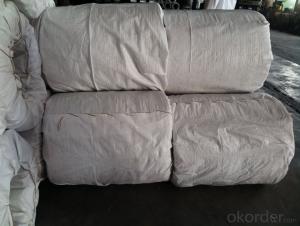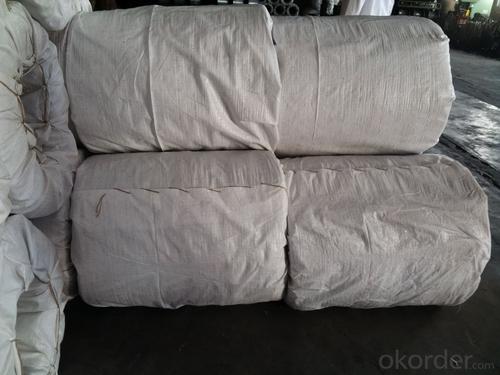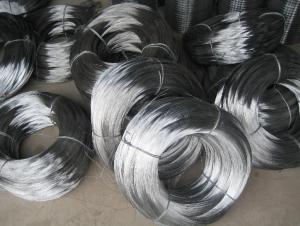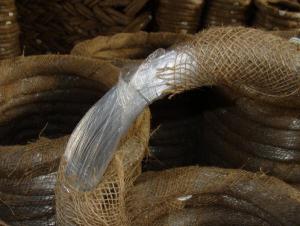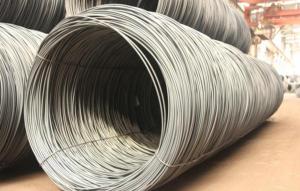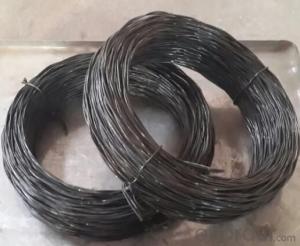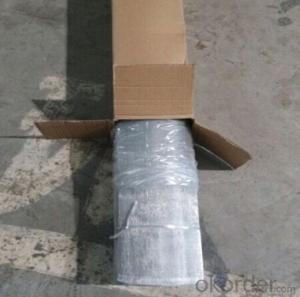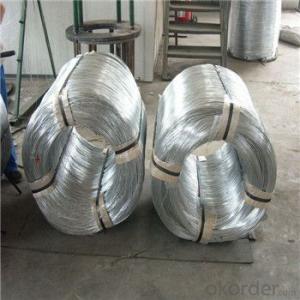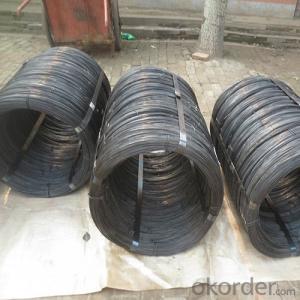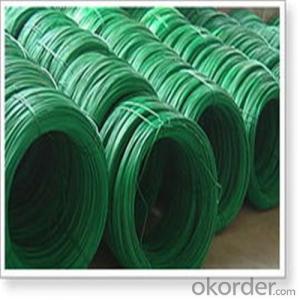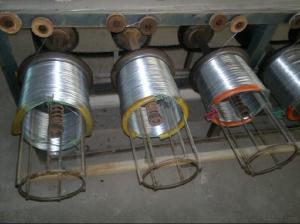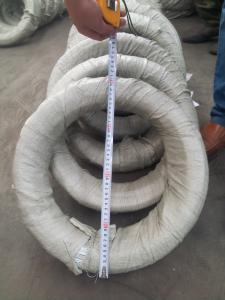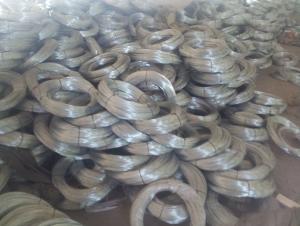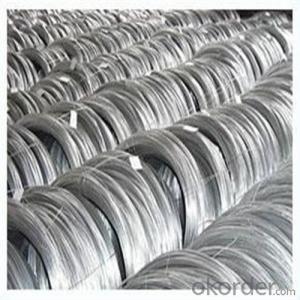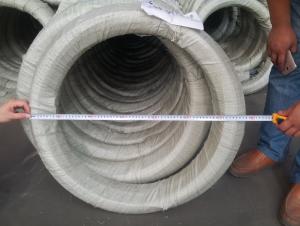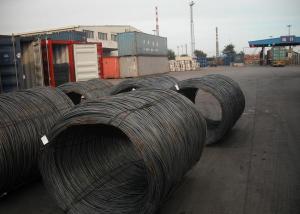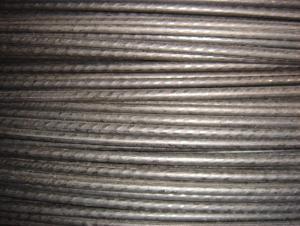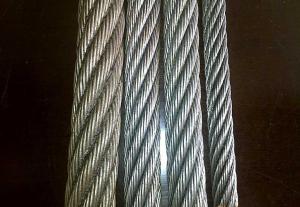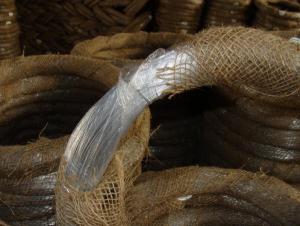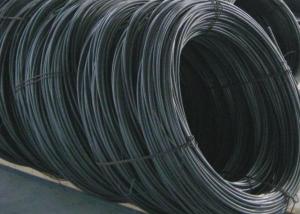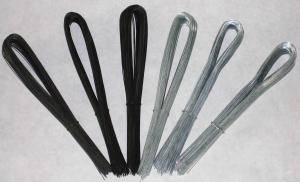E.G. Iron Wire
- Loading Port:
- China Main Port
- Payment Terms:
- TT OR LC
- Min Order Qty:
- -
- Supply Capability:
- -
OKorder Service Pledge
OKorder Financial Service
You Might Also Like
Galvanized Iron Wire /Galvanised Steel Wire
(1) Quality : Meet GB/T 343 standard and other requirements of relevant standards .
(2) Zinc Coating: Meet GB/T 15393 standard and other requirements of relevant standards .
(3) Raw Material : Wire rod ——1006 , 1008 , 1018 , Q195 , etc, and zinc with 99.995% purity.
(4) Tensile Strength Range
Size (mm) | Tensile Strength (mpa) |
0.15-1.60 | 290-550 |
0.65-1.60 | 400-550 |
1.61-6.00 | 400-1200 |
(5) Application : Used in wire mesh , artware , metal hose , binding for agriculture and construction , etc.
(6) Packing
Size (mm) | Coil Size | Spool Packing | Big Coil Packing | |
ID (mm) | OD (mm) | |||
0.15-0.26 | 6 inch | 1-14kg/spool |
|
|
0.27-0.60 | 8 inch | 1-100kg/spool |
|
|
0.61-1.60 | 12/14/16 inch | 1-100kg/spool | 250-400 | 400-770 |
1.61-6.00 |
| 14-500kg/spool | 450 | 800 |
508 | 840 | |||
(7) Zinc Coating
Meet GB/T 15393 standard.
Size (mm) | Weight of Zinc-Coating ( g/m2 ) | |||||||
A | AB | B | C | D | E | F | ||
A1 | B2 |
|
|
|
|
|
| |
≤0.25 |
|
| 30 | 20 | 18 |
|
|
|
>0.25-0.40 |
|
|
| 30 | 25 | 20 |
|
|
>0.40-0.50 |
|
|
|
| 30 | 20 |
|
|
>0.50-0.60 |
|
|
|
| 35 | 20 |
|
|
>0.60-0.80 | 120 | 110 |
|
| 40 | 20 |
|
|
>0.80-1.00 | 150 | 130 |
|
| 45 | 25 |
|
|
>1.00-1.20 | 180 | 150 |
|
| 50 | 25 |
|
|
>1.20-1.40 | 200 | 160 |
|
| 50 | 25 |
|
|
>1.40-1.60 | 220 | 180 |
|
| 50 | 35 | 30 |
|
>1.60-1.80 | 220 | 180 |
|
| 70 | 40 | 30 |
|
>1.80-2.20 | 230 | 200 |
|
| 80 | 50 | 40 |
|
>2.20-2.50 | 240 | 210 |
|
| 80 | 55 | 40 |
|
>2.50-3.00 | 250 | 230 |
|
| 90 | 70 | 45 |
|
>3.00-4.00 | 270 | 250 |
|
| 100 | 85 | 60 | 30 |
>4.00-5.20 | 290 | 270 |
|
| 110 | 95 | 70 | 40 |
>5.20-6.00 | 290 | 270 | 245 |
| 110 | 100 | 80 | 50 |
- Q: Has anyone tried to use or experiment to use CAT5E wire on a speaker going to Home theater receiver? If none, can you suggest a good speaker wire to use on a speaker.Paradigm Monitor Series and Onkyo TX-SR606 (Speaker and Receiver)
- Speaker wire is a big subject that prompts some very heated debates amongst the serious enthusiast crowd. Using CAT5 as speaker cable is usually motivated by either one of two thoughts: Saving money, or improving performance. I can see the point in saving money compared to say Hi-Fi speaker cables at $5/ft, but there are perfectly good OFC copper cables of decent gauge such as 79 strand that actually work out just as cheap. The other issue with cost saving is that not all CAT5e is created equal. A lot of the budget stuff from China is copper clad aluminium rather than pure copper. You'd never choose to run your speakers with aluminium cable, so why take the risk if using CAT5e? Performance is something different. That's very subjective. The reasoning why CAT5e is based on the high frequency performance of the cable. But in hi-fi world we need current delivery more than high frequency extension. My own view is that CAT5e sounds different enough to - buy not necessarily better than - basic OFC 79 strand for most listeners to hear the change fairly easily. Treble and to a lesser degree the bass gets accentuated at the expense of midrange. It's a bit like hitting the Loudness button. The sound has a bit more presence at the expense of naturalness. Personally I think the benefits are dubious and not worth the effort. Get a decent gauge OFC that's nice and flexible rather than some plaited network cable.
- Q: A load of 125 kip is being held by 3 wires all going up. The Wire one goes straight from the load to the horizontal. Wire 2 and 3 form a V on top of wire 1 and are 30 degrees from wire 1. This is a 2-D problem.
- You need to use summation of forces. Wires 1 and 2 are gonna have the same tension on them, just in opposite directions. so in the x direction, Fx=125cos(30)+125cos(150) (the vertical wire doesn't contribute to the x-direction forces and I choose 150 because the wire on the left really has an angle of 180-30 or 150) in the y direction, Fy=125sin(30)+125sin(150)+125sin(90) (The vertical wire is a 90 degree angle) Tension=sqrt( Fx^2 + Fy^2 )
- Q: what gauge wires should i use for my 12'' alpine typr r SWR-1242D?
- 4 guage amp kit This one is the best SoundQuest SQK0 1/0 Gauge Copper-Clad Aluminum Wiring Kit Technical Details * 1/0 Gauge Power and Grounding Wires * Remote Wire, Speaker wire, and RCA Signal Wires * Fuse Block and Fuse * Various crimp style connectors
- Q: okay my apt building was built in 1975 I am changing my light fixture new from home depot and the ground wire, the black and white wire are basic on the new fixture. I am looking in the case box in my ceiling all I see is a black wire attached to red, and a yellow wire attached to a white wire which then attaches to another two white wires (then gos go's up behind the casing) I am not sure which is the ground here. There is a copper looking wire that is thick, thick it just isnt as malleable as the new ground wire that is on my new light fixture. It seems very difficult to maneuver.. Could this be my ground from the ceiling. It was attached to the mount of the old fixture my a screw.
- All wiring is different but the basics remain the same. Before attempting anything please turn off the power. If I have the good picture in my head, there are extension wires added to the black and white this would be done if the wire run though the wall was too short and needed a little extra to get wired properly to a fixture. If I look at the bad picture in my head you have a jump cable attached which is running to a second outlet or light fixture. If the extra wires go back into the ceiling leading somewhere else then it is probably running to a different fixture and this isn't the best way to run electrical. It could potentially overload your circuit. If it has been working for 40 years without a problem you are probably ok, so long as the fixture you're adding is within the same category as the fixture you're removing. The thick copper wire will be your ground wire and should be attached to the box, and to the outlet itself with screws. Good luck with that fixture.
- Q: Help me, please! I have an old air conditioning system...made in 1985, and the condenser fan went out. Long story short, I bought a new fan and I don't know how to hook it up. The old fan had 4 wires coming out of it: purple, black, green, and brown. The green is the ground and the brown and the purple went to the capacitor, black to power. Then there were two smaller black wires attached to the capacitor and they lead out to other components. My new fan has a green wire, a white wire, a black wire, a brown wire and a brown and white striped wire. My problem is this: I don't know where to attach the white wire or what to do with the two smaller black wires that were attached to the old capacitor. I was told by the gentleman who sold me the fan that I splice the white wire to purple wire - then do I hook that to the capacitor? What do I do with the two smaller black wires that lead out to other components??? (Cap them off???) I am confused and need some advice!
- I suggest having a tech. wire it in for you, but your new motor should be wired this way, the black and white are your hot and common, so 208v unit, hook black wire to L1, white wire to L2, green is a ground, ground it to cabinet somewhere, brown goes to one side of run cap, brown/white goes to other side of run cap. if you are unsure about how to swap it out then seek someone with some electrical background or an hvac tech., dont hurt yourself or your equipment by doing it improperly, good luck with it!
- Q: i need to know what wire goes where
- hook the white greens together they are your ground. yellow blue are your power as well as the black red these do not matter which they go to. The reason you have 4 wires on 1 then 3 wires on the other is older dryers stoves used only 1 ground as where newer ones have 2.
- Q: The black wire is called ground but what is the red wire called?
- There are standards for wire colours but they vary between countries and industries. When I grew up in the UK black was used for negative power and red for positive power (e.g. ground and +12V). But trailer wiring in Canada seems to use black for +12V, for instance. In a digital electronic circuit, using silicon semiconductors, ground or 0V is often abbreviated GND and the +ve power supply as Vcc.
- Q: Hey there, so my cat chewed through some of my wires, what should I do to like fix them?
- Splice in new wire. Cover any missing insulation with electrical tape.
- Q: I have a 2000 Mazda 626, and I am replacing the factory stereo with a Sony CDX-GT66UPW, I tried replacing it earlier and had to cut off the end plastic pieces for the original stereo wires and stripped the wires, So now I am trying to match up the wires from the new stereo with the old colors, But I don't know what color goes to what on the mazda? Can anyone give me a color coded diagram for the wiring?
- Stereo Wiring Diagram
- Q: I got a ventilation fan for the bathroom. The fan has 2 wires and there are 2 wires sticking out of the wall.How do I know which wire connects to which wire?What would happen if I connect the wrong wires?
- Of the two incoming wires, one should be white (neutral) and one should be black (hot or power). The bath fan should have a neutral and hot also. A wiring diagram can usually be found on the fan unit if a manual is not available. Simply wire the white/neutral to the neutral wire of the fan and do likewise for the hot wire. For safety modern fans make accommodations for the attachment of a ground wire. This provides a path to ground should there be a short in the unit. Hopefully there is a third wire from the wall that will provide a ground. It is usually bare and should be attached to the fan using a green ground screw. Older homes did not have the third ground wire but unless your home is from the fifties, you should have three wires. (If your electrical outlets accommodate three prong plugs, you have grounded wiring). If your bath fan is relatively inaccessible (on the ceiling) not having it grounded might not be that big of an issue but it is always better to ground the bath fan frame when possible. Again, if you have or can locate the manufacturers wiring diagram it should be followed.
Send your message to us
E.G. Iron Wire
- Loading Port:
- China Main Port
- Payment Terms:
- TT OR LC
- Min Order Qty:
- -
- Supply Capability:
- -
OKorder Service Pledge
OKorder Financial Service
Similar products
Hot products
Hot Searches
Related keywords
